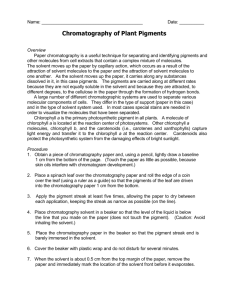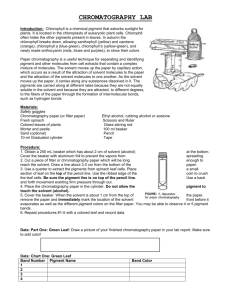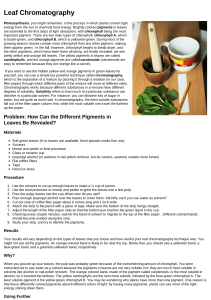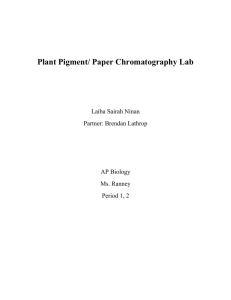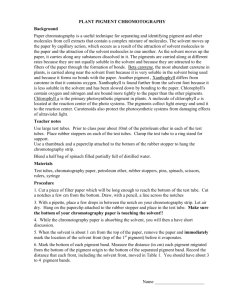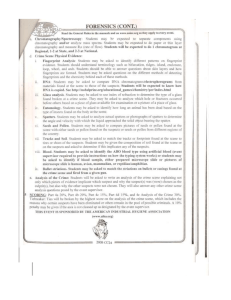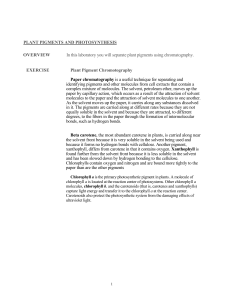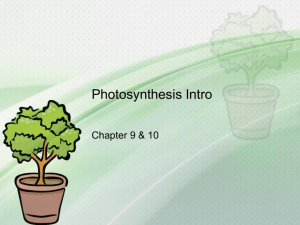ChromotographyPre
advertisement
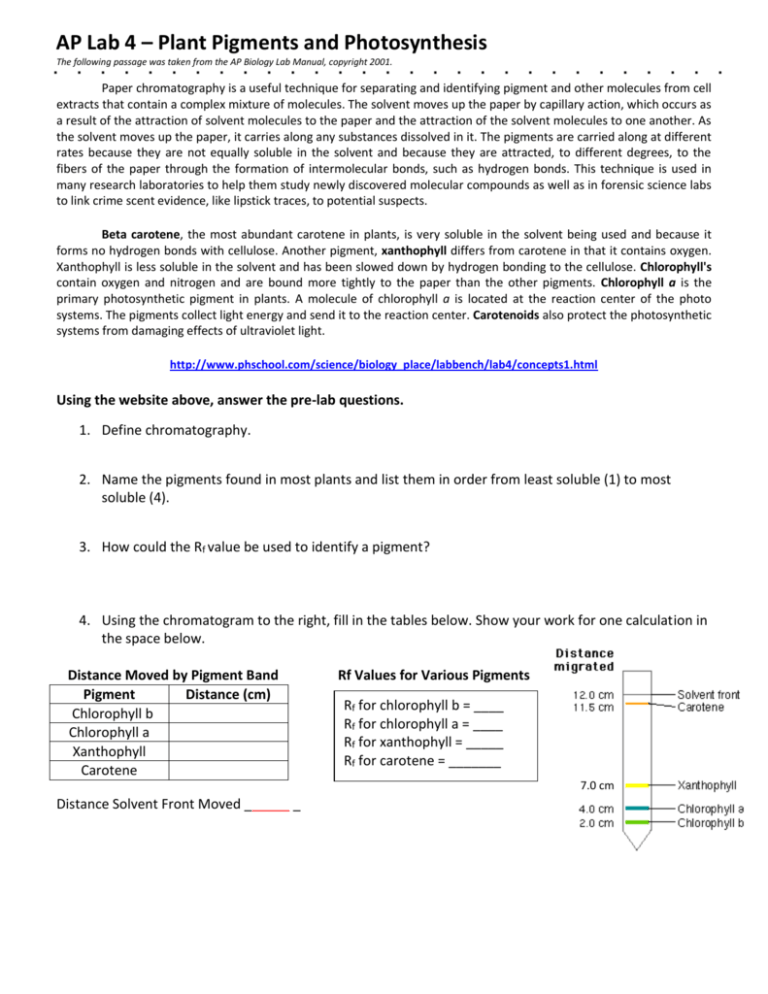
AP Lab 4 – Plant Pigments and Photosynthesis The following passage was taken from the AP Biology Lab Manual, copyright 2001. Paper chromatography is a useful technique for separating and identifying pigment and other molecules from cell extracts that contain a complex mixture of molecules. The solvent moves up the paper by capillary action, which occurs as a result of the attraction of solvent molecules to the paper and the attraction of the solvent molecules to one another. As the solvent moves up the paper, it carries along any substances dissolved in it. The pigments are carried along at different rates because they are not equally soluble in the solvent and because they are attracted, to different degrees, to the fibers of the paper through the formation of intermolecular bonds, such as hydrogen bonds. This technique is used in many research laboratories to help them study newly discovered molecular compounds as well as in forensic science labs to link crime scent evidence, like lipstick traces, to potential suspects. Beta carotene, the most abundant carotene in plants, is very soluble in the solvent being used and because it forms no hydrogen bonds with cellulose. Another pigment, xanthophyll differs from carotene in that it contains oxygen. Xanthophyll is less soluble in the solvent and has been slowed down by hydrogen bonding to the cellulose. Chlorophyll's contain oxygen and nitrogen and are bound more tightly to the paper than the other pigments. Chlorophyll a is the primary photosynthetic pigment in plants. A molecule of chlorophyll a is located at the reaction center of the photo systems. The pigments collect light energy and send it to the reaction center. Carotenoids also protect the photosynthetic systems from damaging effects of ultraviolet light. http://www.phschool.com/science/biology_place/labbench/lab4/concepts1.html Using the website above, answer the pre-lab questions. 1. Define chromatography. 2. Name the pigments found in most plants and list them in order from least soluble (1) to most soluble (4). 3. How could the Rf value be used to identify a pigment? 4. Using the chromatogram to the right, fill in the tables below. Show your work for one calculation in the space below. Distance Moved by Pigment Band Pigment Distance (cm) Chlorophyll b Chlorophyll a Xanthophyll Carotene Rf Values for Various Pigments Rf for chlorophyll b = ____ Rf for chlorophyll a = ____ Rf for xanthophyll = _____ Rf for carotene = _______ 7.0 cm Distance Solvent Front Moved ______ _

